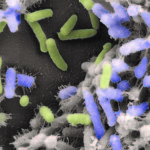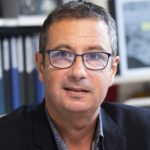Link to Pubmed [PMID] – 12753197
Mol Microbiol. 2003 May;48(4):1075-87
Staphylococcus aureus biofilm formation is associated with the production of the polysaccharide intercellular adhesin (PIA/PNAG), the product of the ica operon. The staphylococcal accessory regulator, SarA, is a central regulatory element that controls the production of S. aureus virulence factors. By screening a library of Tn917 insertions in a clinical S. aureus strain, we identified SarA as being essential for biofilm development. Non-polar mutations of sarA in four genetically unrelated S. aureus strains decreased PIA/PNAG production and completely impaired biofilm development, both in steady state and flow conditions via an agr-independent mechanism. Accordingly, real-time PCR showed that the mutation in the sarA gene resulted in downregulation of the ica operon transcription. We also demonstrated that complete deletion of sigmaB did not affect PIA/PNAG production and biofilm formation, although it slightly decreased ica operon transcription. Furthermore, the sarA-sigmaB double mutant showed a significant decrease of ica expression but an increase of PIA/PNAG production and biofilm formation compared to the sarA single mutant. We propose that SarA activates S. aureus development of biofilm by both enhancing the ica operon transcription and suppressing the transcription of either a protein involved in the turnover of PIA/PNAG or a repressor of its synthesis, whose expression would be sigmaB-dependent.

